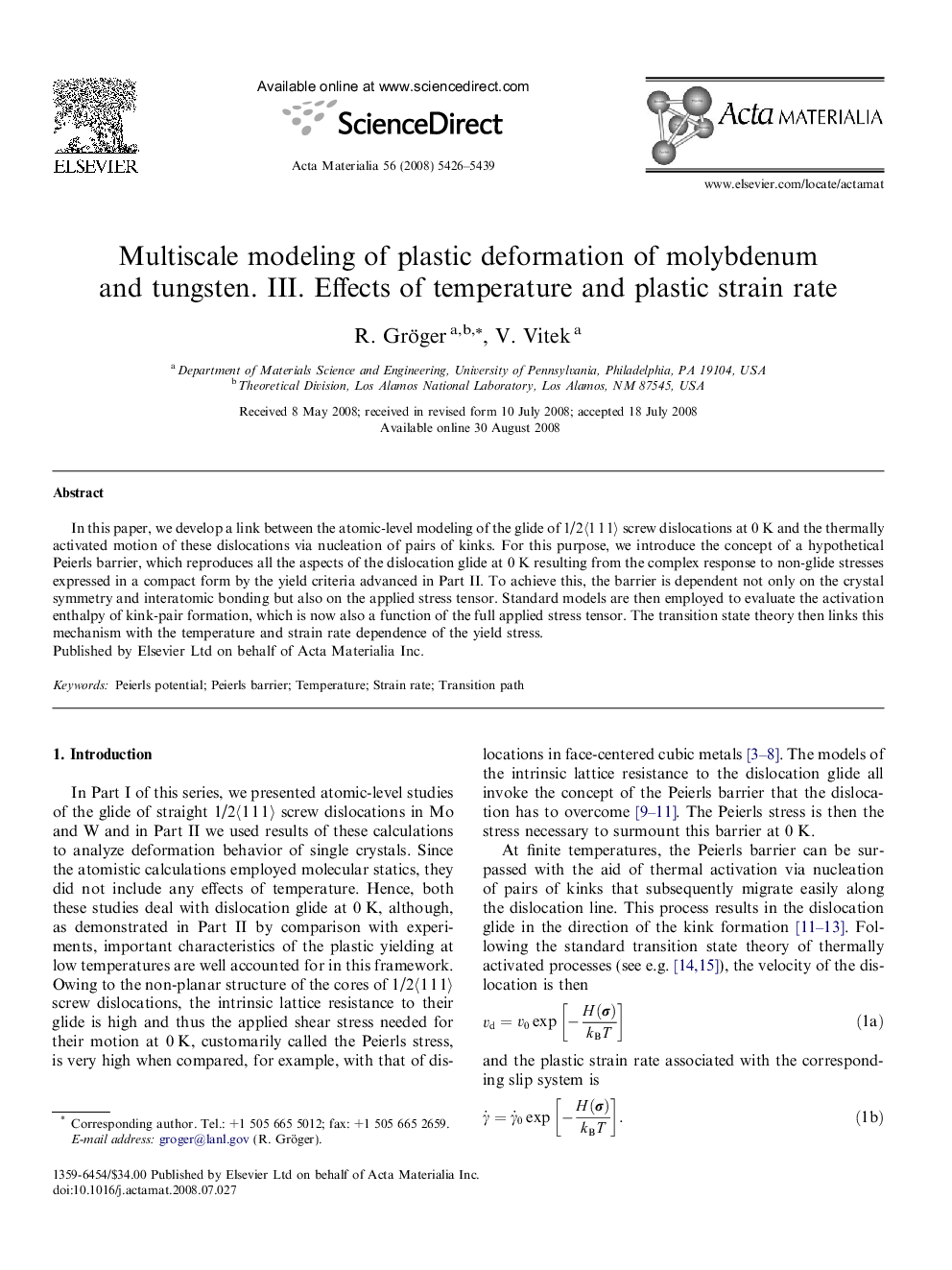| Article ID | Journal | Published Year | Pages | File Type |
|---|---|---|---|---|
| 1449801 | Acta Materialia | 2008 | 14 Pages |
In this paper, we develop a link between the atomic-level modeling of the glide of 1/2〈1 1 1〉 screw dislocations at 0 K and the thermally activated motion of these dislocations via nucleation of pairs of kinks. For this purpose, we introduce the concept of a hypothetical Peierls barrier, which reproduces all the aspects of the dislocation glide at 0 K resulting from the complex response to non-glide stresses expressed in a compact form by the yield criteria advanced in Part II. To achieve this, the barrier is dependent not only on the crystal symmetry and interatomic bonding but also on the applied stress tensor. Standard models are then employed to evaluate the activation enthalpy of kink-pair formation, which is now also a function of the full applied stress tensor. The transition state theory then links this mechanism with the temperature and strain rate dependence of the yield stress.
